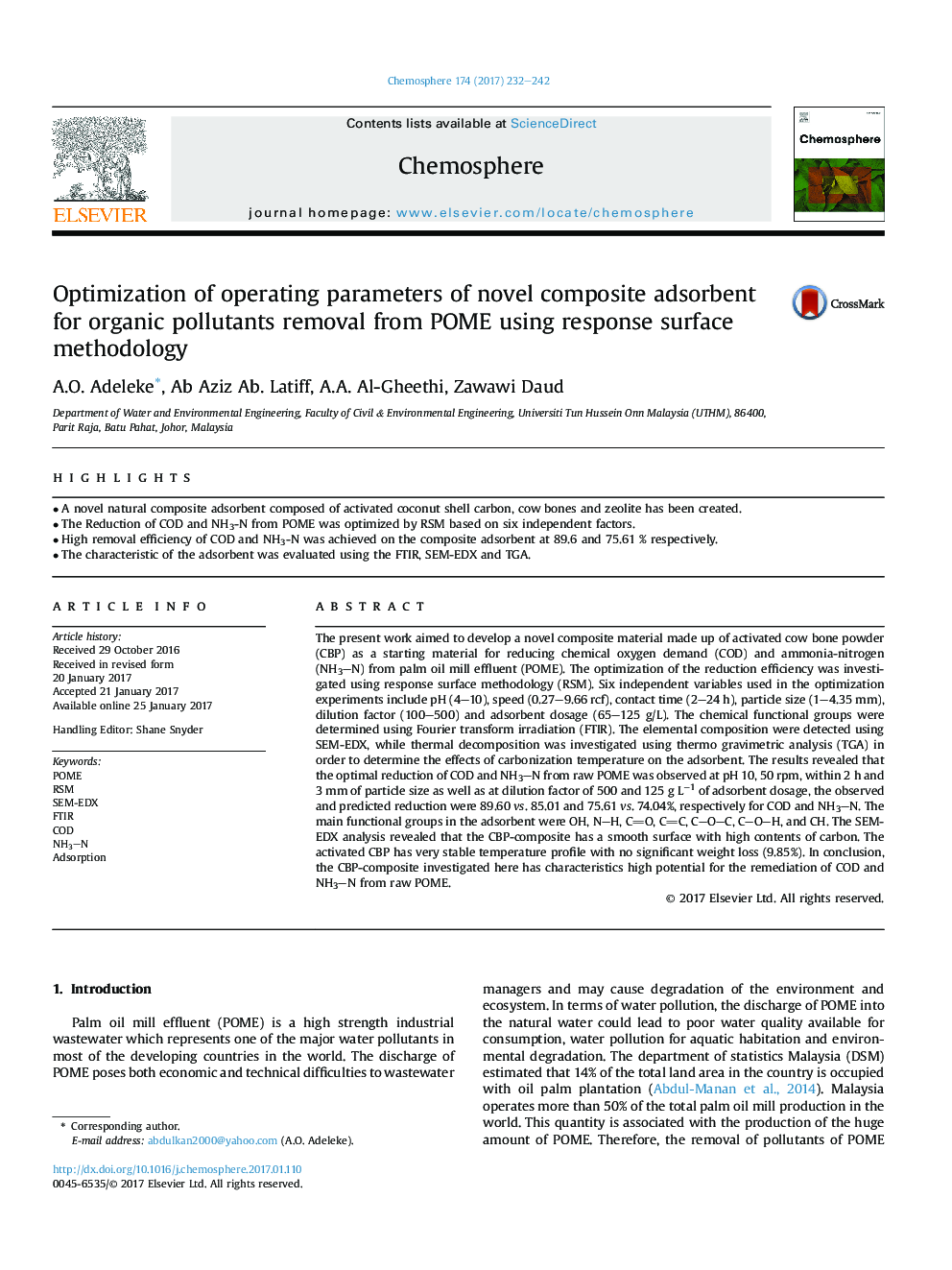| Article ID | Journal | Published Year | Pages | File Type |
|---|---|---|---|---|
| 5747349 | Chemosphere | 2017 | 11 Pages |
â¢A novel natural composite adsorbent composed of activated coconut shell carbon, cow bones and zeolite has been created.â¢The Reduction of COD and NH3-N from POME was optimized by RSM based on six independent factors.â¢High removal efficiency of COD and NH3-N was achieved on the composite adsorbent at 89.6 and 75.61 % respectively.â¢The characteristic of the adsorbent was evaluated using the FTIR, SEM-EDX and TGA.
The present work aimed to develop a novel composite material made up of activated cow bone powder (CBP) as a starting material for reducing chemical oxygen demand (COD) and ammonia-nitrogen (NH3N) from palm oil mill effluent (POME). The optimization of the reduction efficiency was investigated using response surface methodology (RSM). Six independent variables used in the optimization experiments include pH (4-10), speed (0.27-9.66 rcf), contact time (2-24 h), particle size (1-4.35 mm), dilution factor (100-500) and adsorbent dosage (65-125 g/L). The chemical functional groups were determined using Fourier transform irradiation (FTIR). The elemental composition were detected using SEM-EDX, while thermal decomposition was investigated using thermo gravimetric analysis (TGA) in order to determine the effects of carbonization temperature on the adsorbent. The results revealed that the optimal reduction of COD and NH3N from raw POME was observed at pH 10, 50 rpm, within 2 h and 3 mm of particle size as well as at dilution factor of 500 and 125 g Lâ1 of adsorbent dosage, the observed and predicted reduction were 89.60 vs. 85.01 and 75.61 vs. 74.04%, respectively for COD and NH3N. The main functional groups in the adsorbent were OH, NH, CO, CC, COC, COH, and CH. The SEM-EDX analysis revealed that the CBP-composite has a smooth surface with high contents of carbon. The activated CBP has very stable temperature profile with no significant weight loss (9.85%). In conclusion, the CBP-composite investigated here has characteristics high potential for the remediation of COD and NH3N from raw POME.
